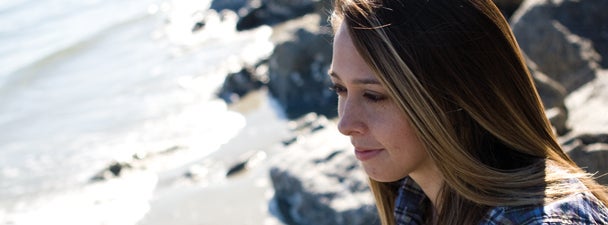
She may have lived the same day twice when she crossed over the International Date Line in Indonesia, but every day is different for Shannon Hoy.
One day she may be spending her volunteer hours at the National Oceanic and Atmospheric Administration lab at Fort Johnson performing humdrum tasks; another she could be cataloging 18 years’ worth of dolphin and whale bones; and other days, she could be assisting in necropsies on stranded marine mammals anywhere on the South Carolina coast.
But when Hoy isn’t on land, she spends her time mapping uncharted territory. A marine biology major, she’s been ready to devote her life to the ocean since she first watched Free Willy in the third grade. Now, at age 22, she knows more secrets about the state of our seas than most ever will.
Hoy began mapping sea floors on the research vessel Ronald H. Brown. She worked as a volunteer survey technician on the NOAA cruise to Nova Scotian waters, where she spent eight hours a day in the computer lab – watching depth contours on the bathymetry monitors rise and fall and making sure that sonar readings were coming in accurately.
“Shannon’s the type of dream student anyone would love to have,” says geology professor Leslie Sautter, who taught Hoy how to use the mapping software and actually sailed with her on the Ron Brown. “It’s the best part of teaching. I’ve seen an undergraduate student blossom into a scientist.”
Three cruises and 18 months later, Hoy has helped map the deepest location on earth, the Mariana Trench. She’s even sailed beside hundreds of dolphins glowing under bioluminescent waters in an upwelling zone. This summer, she will spend five weeks in the Drake Passage on the coast of Antarctica and four weeks traveling from Indonesia to Hawaii.
“I’ve never wanted to work behind a desk,” says Hoy, who grew up landlocked in Dallas. “I’ve always wanted to make a difference and felt I could do that in marine biology.”
Back on land, at Fort Johnson, Hoy’s managed to volunteer more hours than anyone in its history: 350 hours in two years. She took the fall semester off to map on a five-week NOAA cruise aboard the Okeanos, traveling from Indonesia to Guam to Hawaii. But even when class is in session for Hoy, she still works at the NOAA lab and also waits tables part time. It makes sense that Hoy considers her ambition her biggest quirk.
“I’m definitely awkward,” Hoy admits. “I get nervous when talking to people in authority. But I’m a go-getter. There’s so much out there to see and do. I don’t want to not see or not do it. I want to better myself and learn more.”
And the goal of the projects she works on – the necropsies and the sea-floor mapping – is more than mere data collection. Ultimately, it’s preservation.
“When we learn about the oceans, the tectonic plates and the coral reefs, we’re one step closer to saving them,” says Hoy. “It goes hand in hand with the necropsies. By learning how these animals die, we help protect them. There’s nothing else I’d rather do.”
– Alison Sher ’09




